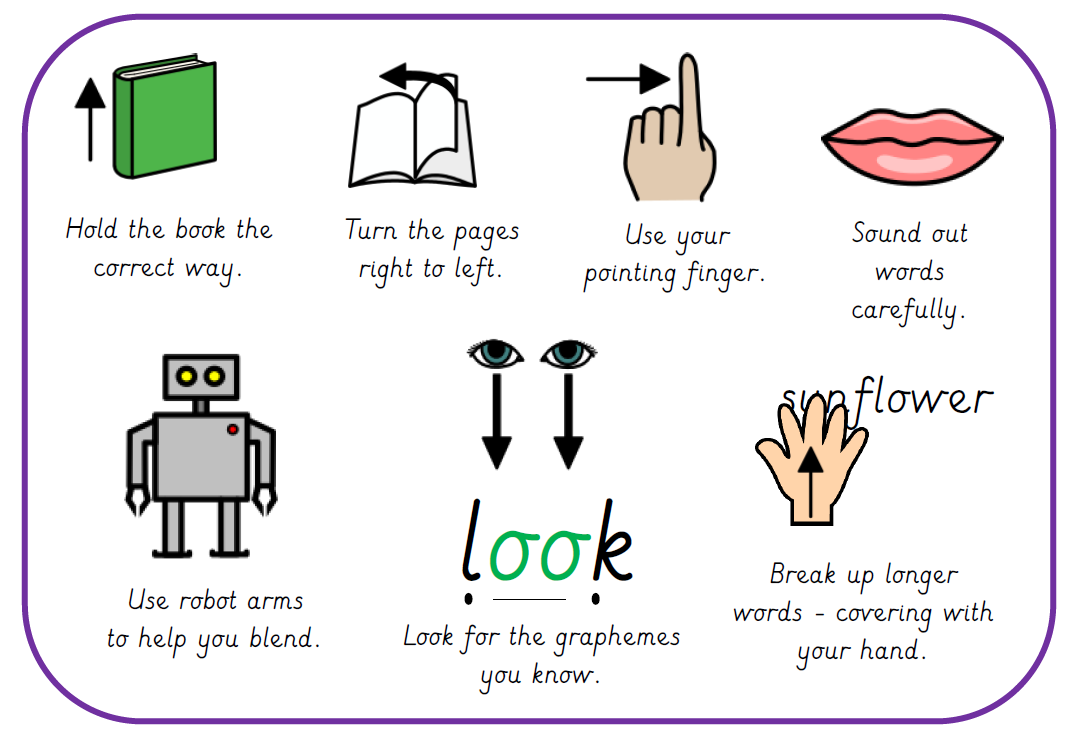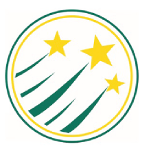Reading
"There is more treasure in books than in all the pirate's loot on Treasure Island." - Walt Disney
At TEACH Trust we actively inspire children to read for pleasure. We strongly encourage you to develop their love for reading. This can be achieved by reading to your child, reading with your child and listening to your child read.
Reading in EYFS and Key Stage 1
Children take part in reading activities across exciting topics on a daily basis, through a range of contexts.
Shared reading:
- Shared reading takes place with the whole class or in small groups, with the adult modelling reading strategies with the support of the children.
- Children are given opportunities to consider the characteristics and features of different kinds of texts.
- Shared reading immerses children in the pattern and features of the text type.
- Children are given opportunities to hear a range of texts read aloud.
Guided reading:
- Guided reading takes place during the daily reading workshop session, and all children will have the opportunity to read with the teacher and teaching assistant weekly. During this time, the children will work in a group to read and explore a text with the teacher’s guidance.
- During the session, children will be given the opportunity to: read aloud to the adult at their own speed, read to themselves, ask and answer questions related to the text, make predictions and complete follow up tasks related to the text.
- EYFS usually start reading workshop after October half term, exploring big books and playing a range of phonics games.
Individual reading:
- Children choose a book from their bookband box to read with the teacher, teaching assistant or school reading volunteer and this is on a 1:1 basis. They develop a range of strategies for tackling new words as well as increasing their comprehension skills through careful, tailored questioning from the adult.
Independent reading:
- Children read texts of their choice, on their own without support, this may be on the computer, in the library, outdoor area or class book corner.
Supporting your child at home
One of the most important ways you can support your child is to spend at least 10 minutes a day reading to them and listening to them read. This is the one thing that will make the most difference to their overall progress with reading in school.
Researchers in the United States who had looked at the impact of parents reading with their children quoted the following figures in a news release about their findings: ‘Here’s how many words kids would have heard by the time they were 5 years old: Never read to, 4,662 words; 1–2 times per week, 63,570 words; 3–5 times per week, 169,520 words; daily, 296,660 words; and five books a day, 1,483,300 words.’ (Science Daily 2019)
We would also like to remind you that the books that come home with your children will be easier than the ones they are reading at school. This is so your child can practise their decoding skills with the sounds that they have learnt in school. This will lead to increased understanding, confidence and enjoyment! It is usual for the children to read the same text more than once, and we encourage this. Reading the same book more than once deepens the children’s familiarity with a story, relive the excitement of the book and increases their emotional engagement. It also allows them to hear new vocabulary again, helping them to remember the meaning of new words.
When the children are reading, we encourage them to use a range of strategies. These include sounding out any unknown words carefully, looking for the graphemes that they know, breaking up longer words, using robot arms to help them blend and to use their pointing finger to follow the words. During reading sessions, the children are able to refer to the prompt card below as a reminder.

You can support your child to develop their reading skills by:
- encouraging them to bring home reading books;
- reading regularly to them;
- helping younger children with their sound books;
- showing an interest in what they are reading;
- listening to them read;
- helping older children learn spelling lists;
- encouraging them to read their keywords by sight;
- encouraging them to write simple letters to friends, relatives or teachers;
- showing them how to form letters correctly;
- use lower case not capital letters with young children;
- encouraging your child to express ideas and opinions clearly;
- taking them regularly to the library.
Encouraging a love of books
- Regularly sharing stories and information books, reading shopping lists, labels, signs, menus, magazines, electronic texts and comics all help children to see the purpose of reading. You can also help by encouraging your child to join the library and no matter how old he or she is; they will benefit greatly from listening to you read to them. Children will also be encouraged to read if they see the adults around them reading, both for pleasure and for information.
Sharing books at home
- Choose a quiet time when you can enjoy the book together.
- Ask your child to talk about the cover and the pictures before looking at the words.
- If appropriate talk about the author/illustrator/contents/index/word types and meanings.
- Share a range of books – fiction, non-fiction and poetry.
- When reading encourage them to use the skills they know e.g. sounding out, guessing what a word might be from looking at the pictures or reading the rest of the sentence etc.
- Encourage them to use expression in their reading.
- Make it fun! If your child is tired or frustrated, stop and try again later.
- Starting to read together may help a reluctant reader to ‘have a go’.
- Give your child lots of encouragement and praise.
- Talk, and ask questions, about the characters, what happened, what they think might happen next and what they enjoyed (or didn’t enjoy) about the book.
Bookband Levels
As your child decoding and comprehension skills progress, they will move to a new bookband. The bookbands are colour coded and numbered. Your child will start on bookband 1 (pink) and follow the progression through the bookbands shown below.
|
BB1 – Pink |
|
BB2 – Red |
|
BB3 – Yellow |
|
BB4 – Blue |
|
BB5 – Green |
|
BB6 – Orange |
|
BB7 – Turquoise |
|
BB8 – Purple |
|
BB9 – Gold |
|
BB10 – White |
|
BB11 - Lime |
It is really important that the children stay on the same bookband until they have good decoding and comprehension skills. Within the bookbands, there are a range of text types and some texts are more difficult than others. Your child’s class teacher will notify you when your child moves onto the next bookband by writing in your child’s reading record, by providing your child with a new bookmark. Your child’s bookband bookmark provides further prompts and questions that are pitched at an appropriate level for your child.
Reading Record
Please use your child’s reading record to keep a record of the books your child reads and to enter a comment about their reading. These may be books they have brought home from school, ones they have borrowed from the library, online books on bug club books you have at home. This record will help us to know what your child can do and inform us about the range of books they have read. We will also write in the record when your child has read in school and provide appropriate keywords for them to practise.
Our School Library
Your child will regularly bring home a school library book, please share this book with your child, and ensure that they have their library book in their bookbag on their library day so that they can exchange it for a new one.
Reading Information Evening
Every year in EYFS, all parents and carers are invited in to a ‘Reading information evening’ where the teachers share information about how the children will be taught to read and write in class.
